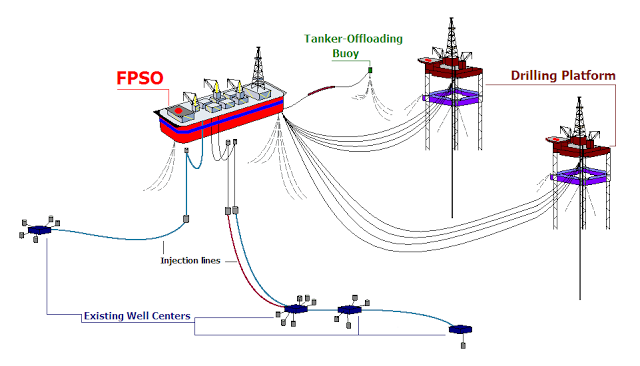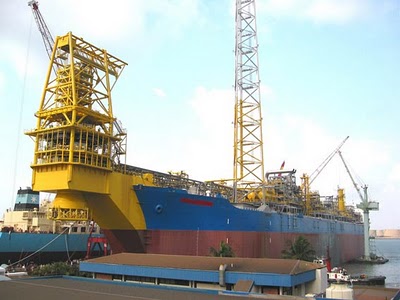FPSO-Turret System Stability
Turret system positioning is a crucial task in the design of an FPSO. A common approach is to avoid equilibrium bifurcation when the system is subject to current action, in order to assure low levels of
mooring forces as well as undesired dynamic behaviour that could lead to excessive loading both on the bearings and on the risers.
Installing the turret near the midship section is a desired trend and doing it whilst preserving the ship’s directional stability can be made possible with the use of passive current stabilisers. This move, on the other hand, has to be investigated for the case when waves and wind are present, as, in this case, the stabiliser may produce an adverse effect.
The present work addresses this point through a case study where the dynamics of a typical VLCC converted into a FPSO and moored to the seabed through a turret system is numerically simulated with a model where wave-current interaction is taken into account. It has been found that a small degree of instability with respect to current action may reduce wave heading which tend to improve the system overall behaviour, as far as mooring forces are concerned. The effect of rudder-type stabilisers on equilibrium bifurcation and on wave heading is discussed and exemplified. A brief discussion on other aspects involved in moving the turret towards midships or installing
stabilisers is carried out.
Several characteristics of tankers such as large deck areas and storage capacity, as well as market availability, make them a good option for use in oil production at sea. These units are generally named FPSO’s (acronym for Floating Production Storage and Offloading) and their use, be it newly built or converted, is very well suited for production in projects where large oil processing and storage capacities are required.
Amongst many mooring options for their station keeping, the SPM (Single Point Mooring) of turret type stands out due to the vessel’s weathervaning ability (fig. 1).
However, designing both the riser and the mooring systems of a turret type FPSO is no easy task and studying their dynamic behaviour both qualitative and quantitatively has been the concern of many engineers and researchers in recent years. This work has received intensive support from oil companies seeking to add reliability to their systems and to extend the range of applicability of their design tools. See, for instance, Papoulias and Bernitsas (1988), Garza-Rios and Bernitsas (1996), Bernitsas and Garza-Rios (1996), Nishimoto, Brinati and Fucatu (1996), Fernandes and Aratanha (1996) or Pesce and Yanuri (1997).
One of the aspects that strongly influence the riser behaviour on a turret is its location with respect to the midship section. The closer to the bow the turret is located, the higher the first order excitation experienced by the riser. Therefore, bringing the turret aftwards is a desired trend. Usually when the turret is at the midship section or near it, bow and/or stern thrusters are installed in order to keep the vessel’s heading conveniently oriented.
Petrobras standard option for turret moored FPSO’s design is to adopt a passive vessel. Consequently, turret location is generally required to be near the bow in order to assure that directional stability is preserved.







